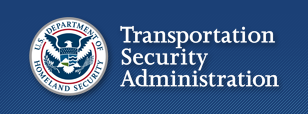A simplification of TSA rules

Some students will be traveling on planes over summer, so here is a break down of the sometimes confusing TSA rules.
July 30, 2014
The Transportation Security Administration is essential in travelling by plane over the summer. From carry-ons, to liquids, to medical problems, here are some tips that must be kept in mind while flying on an airplane.
1. Travelers should always be prepared to have their carry-on bag briefly searched. It is acceptable to carry a 3.4 ounce or less liquid bottle that must be in a clear plastic, zip-up bag. Medications and other important liquids are allowed to be carried, but travelers should anticipate that further inspection may take place with those bags. Make sure to be prepared to have carry-on bags searched briefly, therefore make sure to have all liquids in zip-up bags to make the process as quick as possible. If liquids exceed the limit, they will be disposed of before the flight.
2. Liquid items that should not be put in a carry-on bag and must stop at a checkpoint include sauces, spreads, dips, perfumes, snowglobes, alcoholic beverages, and the like. Items purchased in the airport are acceptable to bring on the flight.
3. There are many items that are acceptable to bring in a checked bag, but not a carry-on. These items include sharp objects such as scissors, sports related items such as baseball bats, ammunition, etc. Items that are not acceptable in a bag that is carried on or checked include fireworks, chlorine, spray paint, etc. On the TSA’s website, there is a search bar to help travellers determine if they can bring certain items on the plane.
4. The TSA tries to accommodate those with disabilities and on its website it lists how they can help those with disabilities and has a toll free TSA Cares help line at 1-855-787-2227. The links with specific information about accommodation can be found here.
5. Acceptable forms of identification include U.S. passports, U.S. military IDs, a learner’s driver’s license or a driver’s license.
For additional information visit the TSA’s website.



